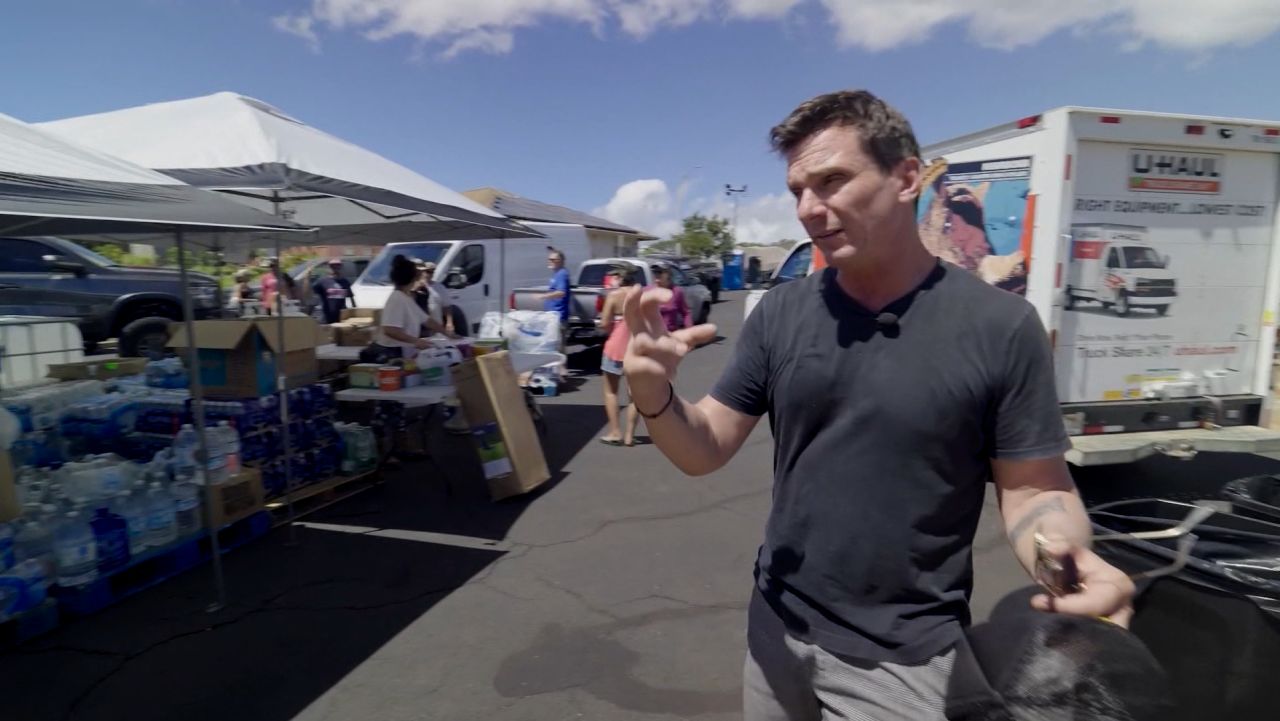As gale-force winds rushed down the slopes of Maui’s Mauna Kahālāwai mountains early Tuesday morning, Shane Treu stood outside his home with a garden hose — one of the first people in Lahaina to fight what would become America’s deadliest wildfire in more than a century.
A power line on his street had been knocked down amid howling winds, Treu said in a Facebook Live video, which showed flames in the grassland across the street and thick smoke obscuring his sweeping ocean view.
While the cause of the fire has not been determined, observers have pointed to downed power lines, sputtering fire hydrants, and emergency alarms that sat silent as factors that hampered the response to the deadly blaze.
Now, amid the charred remnants of the disaster, residents and government officials are asking how the fire could have killed at least 99 people and sent others fleeing into the ocean — despite years of warnings that wildfires posed a serious threat to the island.
Lawsuit alleges power lines a factor: As the fires grew last Tuesday, they were buffeted by extreme winds caused by Hurricane Dora, which was passing hundreds of miles south of Maui. Those winds also battered power lines on the island, and dramatic videos show lines swaying and being toppled in the gusts.
Bulletins from the county reported downed power lines blocking roads around Lahaina, and some residents fleeing the area said that their escape routes were blocked.
Now, some locals are casting blame on Hawaiian Electric, the state’s biggest utility, for not shutting off power to high-risk areas — and claiming that its power lines could have sparked the deadly fire.
Jim Kelly, a spokesperson for Hawaiian Electric Company, said the company does not have a “formal power shutoff program” and that electricity powers the pumps that provide water for firefighting.
Alarms and fire hydrants: As flames spread through Lahaina, critical systems for evacuating residents and fighting fires — the emergency alerts network and fire hydrants —appeared to break down, failures that are now getting more attention as residents try to figure out what went wrong.
Officials have said that the speed of the fire through town made it “nearly impossible” to issue advance evacuation orders, as Bradford Ventura, the county fire chief, put it in a Thursday news conference.
Even the state’s vaunted integrated outdoor siren warning system — the largest in the world, with about 400 alarms — was not activated during the fires, according to Hawaii Emergency Management Agency spokesperson Adam Weintraub.
Land conditions and climate change: Even before the winds from Hurricane Dora fed the flames on Maui, a dangerous combination of drought and dry grasses set the stage for the disaster by transforming the island into a tinderbox.
Like large swaths of the mainland United States, Hawaii is in the midst of a drought, with parts of Maui suffering from severe drought conditions. This has become more extreme and common across the archipelago and others like it in the Pacific, according to the US National Climate Assessment released in 2018.
People have also introduced nonnative fire-prone grasses and shrubs that now cover nearly a quarter of Hawaii’s total land area.
Dig deeper.






